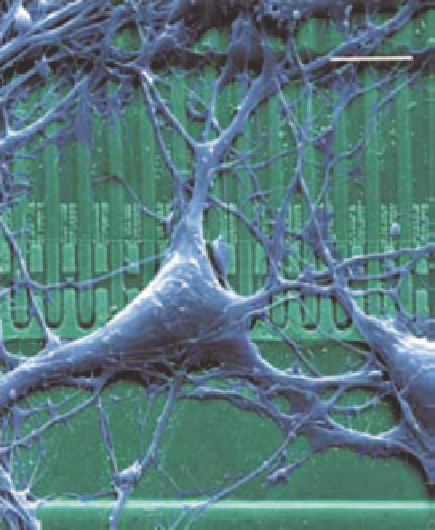Biomedical Engineering Reference
In-Depth Information
3.3 Charge Transfer and the Interface
The cell contains inherent specific receptors that respond to external stimuli,
allowing it to intrinsically behave as a 'sensing' component. The cell's 'sensing'
abilities enables interfacing molecular electronics with neurons. In addition, the
transduction cascades that are instigated by the initial receptor-ligand binding
act as signal amplifiers of the binding event, allowing electronic detection of
specific signaling pathways to discern particular interactions taking place at the
membrane level.
With advances in the design and fabrication of microelectronic circuits, a
perfect dimensional match between electrodes and neurons is generated.
Figure 3.3 illustrates the growth of a neuron over a transistor. At the
submolecular level, the ionic conduction in the cellular matrix is transferred to
electronic conduction in the sensing device. Ions and electrons differ greatly in
terms of their mobility and their actual charge transfer mechanism is still not
well understood. In vitro detection of neural signals requires a stable and
carefully designed interface that is capable of optimizing the transduction of
action potentials, membrane depolarization, ionic flux and biochemical signals
into a quantifiable and measurable electrical signal.
The characterization of the neuron-electrode interface through an electrical
model has been reviewed by Rutten
19
d
n
4
t
3
n
g
|
7
and is characterized by three
n
3
.
Figure 3.3
Image of a neuron grown on an integrated field effect transistor, and this
illustrates the dimensional match between neurons and microelectronics.
20
(Reprinted by kind permission of Elsevier Science.)

